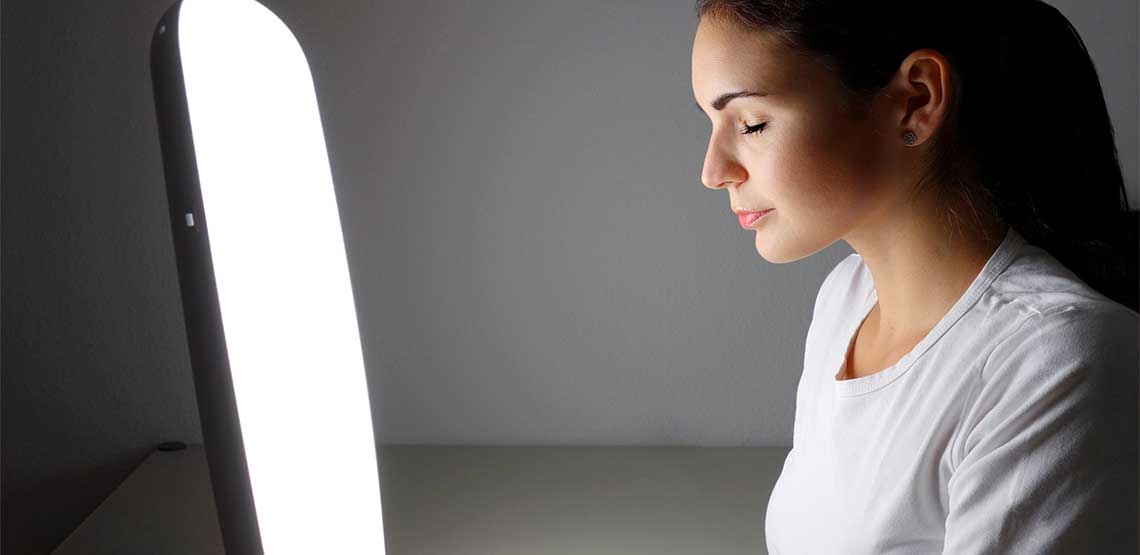Light Therapy for Depression: Does It Work?
Antidepressants and talk therapy are preferred treatment choices for depression. While these treatments are effective, other options to manage depression are available. For instance, light therapy for depression offers an effective alternative treatment choice. With the rate of depression rising in the U.S., it is essential to increase awareness of all treatment possibilities.
The CDC reports that 4.7% of adults in the U.S. have regular bouts of depression. According to Mental Health America, 50 million Americans experienced a mental illness in 2019. Of this population, 4.58% have thought of suicide. What’s problematic is the number of youths who experience major depression and suicidal thoughts, with numbers rising every year. For Canada, the statistics for depression mirror those of the U.S., with 5.45% of Canadians diagnosed with depression.
When it comes to depression, treatments are not one-size-fits-all. What works for one person may not help another, so trying several treatments may be necessary to find the proper intervention. One treatment with promise is light therapy for depression.
What is Light Therapy for Depression?
Light therapy, also known as phototherapy, involves exposing an individual to an artificial light source. During light therapy, the affected individual sits or works next to a particular type of light, called a light therapy box. This light may shine a variety of lights, such as a light that mimics outdoor sunlight. The type of light therapy prescribed depends on an individual’s treatment needs. For example, a doctor may take an individual’s natural 24-hour rhythm pattern into account.
Light therapy improves mood by influencing brain chemicals responsible for sleep and mood. For example, humans have a circadian rhythm that syncs with exposure to light. Human ancestors hunted, farmed and rested using the sun’s natural patterns. However, with the advent of artificial light, humans have drastically changed their living patterns. For some people, these changes can trigger mood and sleep disorders, like depression. Light therapy modulates a person’s circadian cycle, bringing it back to a balanced state.
6 Benefits of Light Therapy
Light therapy is not only beneficial for the treatment of depression but can assist with other challenges. Here are six benefits of light therapy for depression.
1. Improves Serotonin Levels
The hormone serotonin plays a significant role in balancing mood and positive emotions. In addition to this vital task, serotonin also enables efficient communication between brain cells and nervous system cells. What’s more, sleeping, digestion and appetite are all affected by the levels of serotonin hormones in the body. Light therapy helps stabilize hormone levels and reduces the side effects associated with abnormal serotonin levels.
2. Better Sleep Routine
According to the American Academy of Sleep Medicine, light therapy can improve symptoms associated with sleep disorders, like insomnia or circadian rhythm problems. Exposure to various forms of light therapy can regulate an individual’s sleep cycle, resulting in a restful night’s sleep.
3. Enhances Alertness
Individuals who struggle with daytime sleepiness may benefit from using a light therapy box. For example, the Parkinson’s Foundation states that individuals with Parkinson’s may experience improved alertness in the day through light therapy box treatment.
Related Search Topics (Ads)
4. Stabilizes Mood
A 2019 study published in the Frontiers of Psychiatry, showed that bright light therapy effectively treated mood disorders. Light therapy has long since been the treatment of choice for seasonal affective disorder, or SAD. Light therapy has also shown promise in resolving irritability and anxiety.
5. Medicine-Free Treatment for Depression
For individuals who do not respond well to medication or experience severe side effects from antidepressants, bright light therapy is a feasible option. Women who are breastfeeding and want to avoid antidepressants can also benefit from light therapy for depression without worrying about significant side effects.
6. Manages Appetite
The long hours of sunlight in June, July and August make the summer season an ideal time to lose weight. Circadian rhythm and light exposure affects appetite and metabolism. Exposure to light increases weight loss and manages appetite, making light therapy an excellent medication-free way to help lose weight and manage eating disorders.
Bright Light Therapy Overview
Whether it be used for seasonal affective disorder, depression, Parkinson's, or weight management, light therapy is a valuable and practical tool to address symptoms. Bright light therapy is available through the following methods:
- Bright light box.
- Light visor.
- Desk lamps.
- Dawn simulator.
Bright light therapy can cause minor side effects, such as headaches, nausea, eye irritation and dry skin. If you are interested in light therapy for depression, contact your healthcare professional for an assessment.
Article Resources
- Canadian Mental Health Association (Fast Facts about Mental Health and Mental Illness)
- NCBI (Physiology, Circadian Rhythm)
- Canadian Institute of Health Research (Light therapy and serotonin transporter binding in the anterior cingulate and prefrontal cortex)
- Sleepeducation.org (Bright Light Therapy)
- Psychiatrist.com (A Systematic Review of Bright Light Therapy for Eating Disorders)
- Frontiers in Psychiatry (Bright Light as a Personalized Precision Treatment of Mood Disorders)

